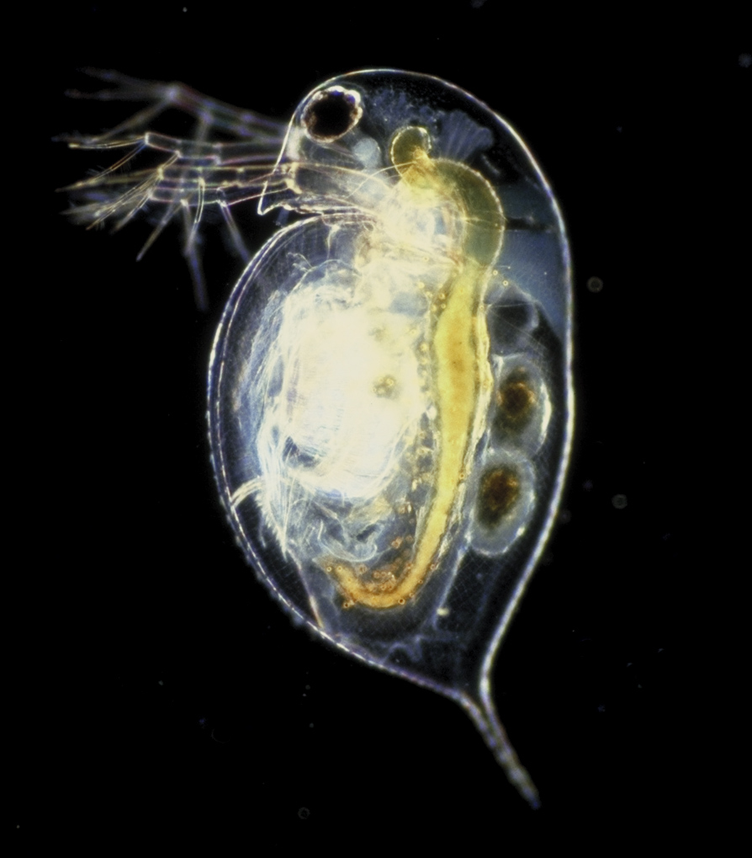Table of Contents
Group 2
<html><font size=6 face=“Arial”>Tasty parasites</font></html>
Wiki site of the practical exercise of the IX Southern-Summer School on Mathematical Biology.
Here you will find the exercise assignment and the group's products.
If you are a group member login to edit this page, create new pages from it, and upload files.
Introduction
 Trophic interactions between phytoplankton (primary producers) and zooplankton (consumers) govern the flow of energy in aquatic systems. Planktothrix agardhii is an abundant aquatic cyanobacteria that can form algal blooms in freshwater lakes.
Trophic interactions between phytoplankton (primary producers) and zooplankton (consumers) govern the flow of energy in aquatic systems. Planktothrix agardhii is an abundant aquatic cyanobacteria that can form algal blooms in freshwater lakes.
 This small phytoplanktonic species displays resistance to grazing by zooplankton such as Daphnia galeata because of its filamentous morphology, production of toxins and low nutritional value. However, Planktothrix can be infected and killed by the obligate parasite Rhizophydium megarrhizum, a chytrid fungus. These parasitic fungi, in turn, have a free-living stage that is highly nutritional and an important food source for zooplankton. Thus, parasitic Rhizophydium fungi create an important trophic link between cyanobacteria and zooplankton termed the “mycoloop” (Agha et al. 2016).
This small phytoplanktonic species displays resistance to grazing by zooplankton such as Daphnia galeata because of its filamentous morphology, production of toxins and low nutritional value. However, Planktothrix can be infected and killed by the obligate parasite Rhizophydium megarrhizum, a chytrid fungus. These parasitic fungi, in turn, have a free-living stage that is highly nutritional and an important food source for zooplankton. Thus, parasitic Rhizophydium fungi create an important trophic link between cyanobacteria and zooplankton termed the “mycoloop” (Agha et al. 2016).
 Additionally, when Planktothrix cells are infected by Rhizophydium, their morphology and nutritional value change and, consequently, they become more edible to Daphnia. This way, Rhizophydium infection facilitates the grazing of Planktothrix by Daphnia, further strengthening the trophic link between phytoplankton and zooplankton.
Additionally, when Planktothrix cells are infected by Rhizophydium, their morphology and nutritional value change and, consequently, they become more edible to Daphnia. This way, Rhizophydium infection facilitates the grazing of Planktothrix by Daphnia, further strengthening the trophic link between phytoplankton and zooplankton.
Assignment
Propose and analyse a mathematical model that describes the trophic dynamics among cyanobacteria (primary producer/host), chytrids (parasite/prey) and zooplankton (grazer/predator).
Suggested questions
- Under what conditions can cyanobacteria, chytrid fungi and zooplankton coexist?
- Under what conditions do cyanobacteria blooms form?
Further well-grounded questions from the group are welcome.
References
T. Frenken et al. (2017) Integrating chytrid fungal parasites into plankton ecology: research gaps and needs. Environ Microbiol, 19: 3802-3822. DOI: 10.1111/1462-2920.13827
R. Agha, M. Saebelfeld, C. Manthey, T. Rohrlack and J. Wolinska. (2016) Chytrid parasitism facilitates trophic transfer between bloom-forming cyanobacteria and zooplankton (Daphnia). Scientific Reports 6:35039 DOI: 10.1038/srep35039.
